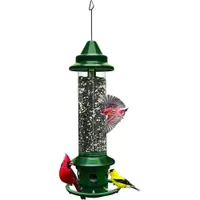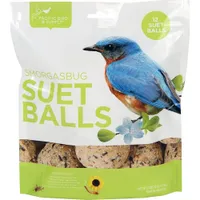How to attract birds to your garden
We asked a vet how to attract birds to your garden — and it’s easier than you might think.
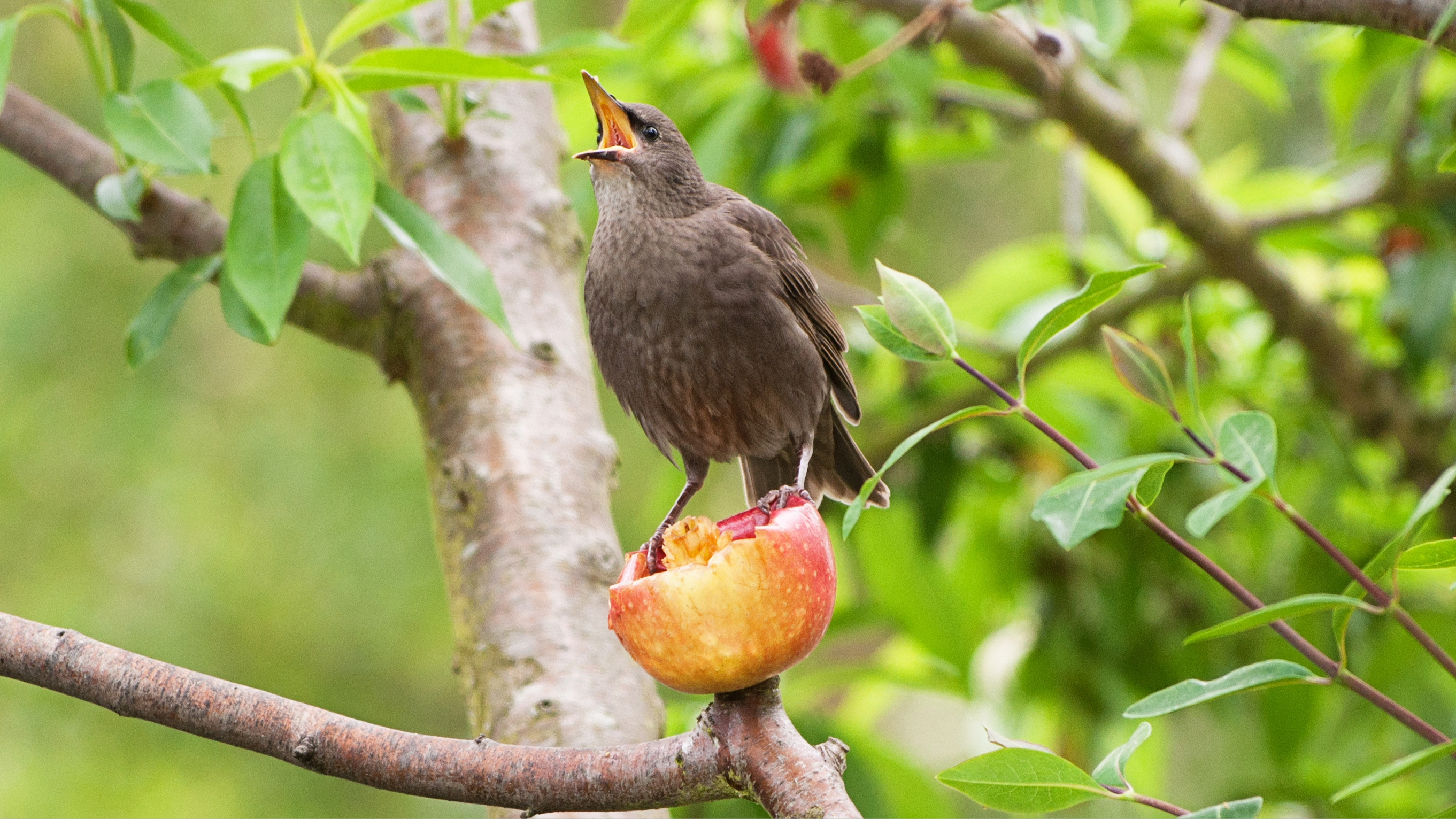
Learning how to attract birds to your garden isn’t as complicated as you might think, in fact, with a few simple tweaks you can create a wildlife-friendly oasis in your backyard that will have new feathered friends flocking from far and wide.
While you’ll definitely want to invest in the best bird feeder and plenty of tasty food to put in it, there are other ways you can encourage more birds to pay you a visit, such as planting bird-friendly trees, shrubs and bushes, and installing a bird bath or nesting box.
When choosing feeders, food and other items, you’ll want to first consider the types of birds you might see in your backyard as different birds have different preferences when it comes to what they like. Once you’ve figured that out, you can plan out your garden accordingly.
To help you make small changes to your backyard that will reap big rewards in the form of more feathered friends flying in to say hi, we spoke to vet Dr. Rebecca MacMillan who shared her four favorite tips for attracting birds to your garden.
How to attract birds to your garden
1. Set up a bird feeder
"If you want to attract birds, ensure you have food for them!," says Dr. MacMillan. "The type of feeder will depend on what bird species you are trying to encourage. Many people will have a couple of feeders suited to different food types including suet, peanuts, and seeds. Just make sure you remove old food and regularly clean your feeders to avoid mold growth and the spread of disease."
If you want to watch the wildlife in your garden, you could find a feeder that has a birdcam attached.
Get the best advice, tips and top tech for your beloved Pets
Check out our guide to the best squirrel-proof bird feeders for a range of great designs that will prevent these cute but crafty creatures from stealing your feathered friends' food!
A strong device with large holes for feeding that close shut when heavy squirrels attempt to eat, this little beauty is our top pick when it comes to the best bird feeders on the market.
2. Provide fresh water
"Most birds appreciate a shallow dish of water that they can drink from and bathe in," explains Dr. MacMillan. "Whatever type of receptacle you choose, make sure it is regularly cleaned and that the water is kept fresh. Try and situate it in a quiet area of your garden where birds can use it undisturbed. Make sure it doesn’t freeze over in the winter months, it might need defrosting regularly with some hot water."
You'll also want to ensure the bird bath is low. This emulates the level at which birds usually find water, so they’re more likely to take a drink if it is not on a podium. For extra security, you can place the bird bath in open spaces to give them chance to see predators coming, and thus feel safer. That said, positioning the bath in a shady area is also crucial, as birds use water to cool off, so direct sunlight won’t be as effective in enticing birds to your garden. Maybe look for shadows that last during the day from tall trees and walls to help keep the water cool. And if it’s nice and shallow, this will create the perfect combination for songbirds to splash around in.
A problem people often encounter is making the water resources visible enough for birds. A key way to counter this can be to install sources with noise so that birds can hear the water as they would in nature.
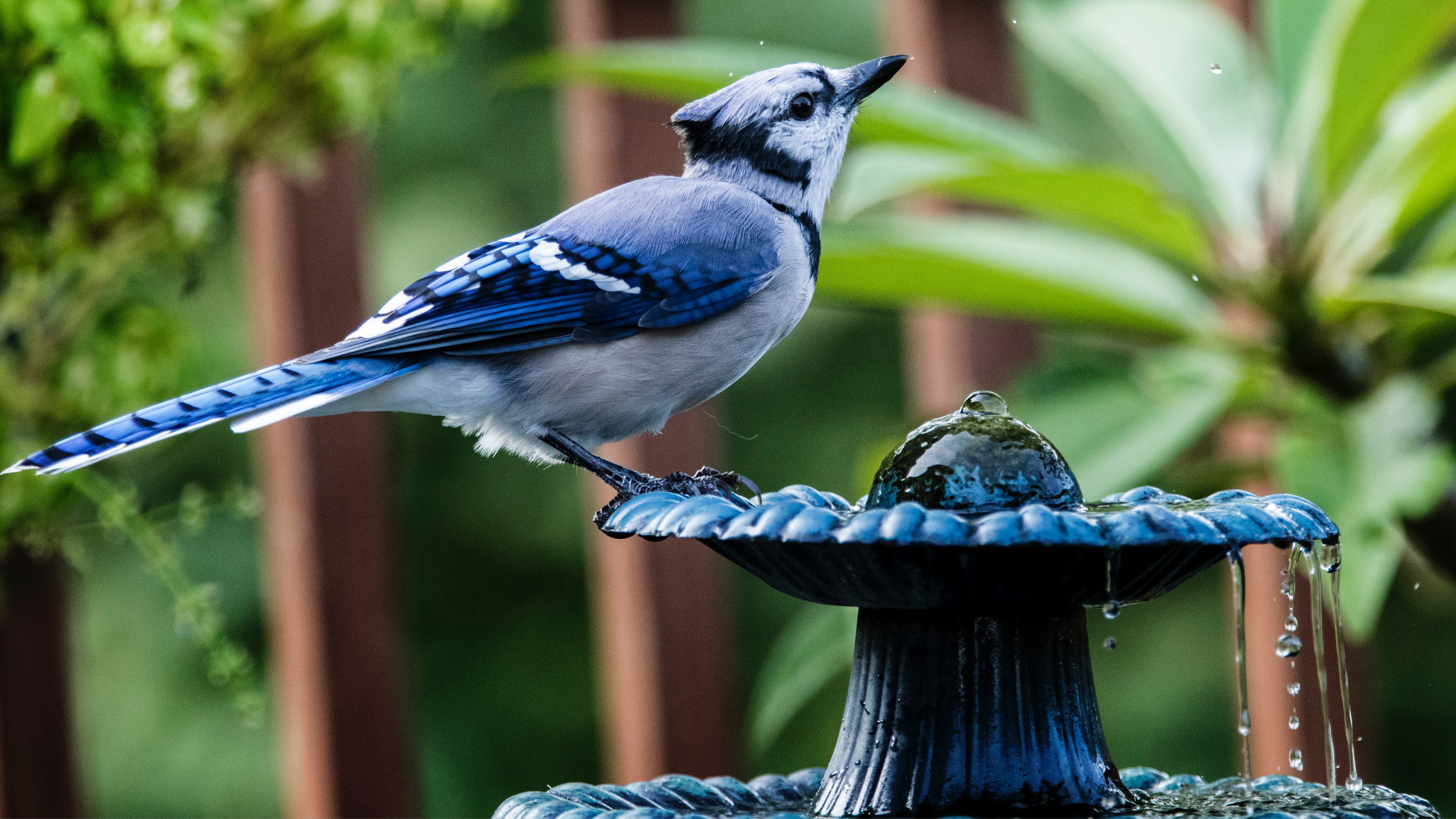
3. Give birds somewhere to shelter
"Think about using a bird table with a shelter on it, so that your birds can stay dry when eating," Dr. MacMillan advises. "This also stops any food that you lay out from getting too soggy. Thick evergreen bushes like conifers are appreciated by birds in the winter months. You could also set up some nest boxes attached to trees or garden walls, which might attract nesting birds in the springtime. Some birds may even shelter in them during the winter."
If you’ve already got a bird box out in your garden that’s not getting any attention, there may be a few changes you need to make.
First of all, you should take into account the food your garden supplies. Only certain birds will nest in boxes, so if you haven’t left out any peanuts or sunflower hearts for bluetits and coaltits, suet for woodpeckers and nuthatches, that’s where you need to start.
Another aspect to take into consideration is the type of boxes certain bird species would like (they’re very fussy). Bluetits and coaltits prefer smaller boxes with small entry holes for maximum security and warmth, while robins are more likely to use open-fronted nest boxes.
As always, make sure your bird box is somewhere in your garden where birds will feel safe!
If you follow a combination of these steps, you’re sure to make your yard as bird friendly as possible. The crucial point to remember when attracting birds to your garden is to ensure the food you leave out, the water you offer up and nest boxes you provide are all free of danger, making the birds feel as secure as they can.
4. Plant bird-friendly bushes and trees
"Gardens that have plenty of vegetation, such as small trees and bushes, will be appealing," says Dr. MacMillan. "This will give your bird population somewhere to hide and shelter. Many birds feel much more secure with some foliage around their feeding areas. Just make sure you don’t situate your feeding station too close to any large overhanging tree branches that a cat could use to pounce on them."
According to research, even when fruits of invasive plants are abundant, migratory songbirds seek out native berries. A study published in Biological Conservation found, ‘Birds primarily consumed the fruits of native species throughout the autumn season.’ Project lead and ecologist, Amanda Gallinat, says this is down to the nutritional value: ‘They can’t be eating ‘fast food’ before they take off on really long migrations. They need something with high energy.’
To find out what plants are native to your area, you can use this handy finder: Audubon Native Plants Database
If you’re after a berry to bring lots of birds to your yard, elderberry is your go-to. Warblers, orioles, tanagers, catbirds, waxwings, mockingbirds, and thrashers will all flock to get a taste; the vitamins provided by the elderberry’s nectar is essentially a superfood for birds.
One of the United States’ most prolific flowering landscape shrub is the viburnum, commonly known as the cranberry. This shrub is very easy to grow, and will be resilient through many different environments. Cranberry will attract a range of birds as well, including robins, catbirds, thrushes, cardinals, finches, waxwings, and bluebirds.
And of course, simply having a lawn will encourage insects to make your garden their home too, which the birds will love to feast on.
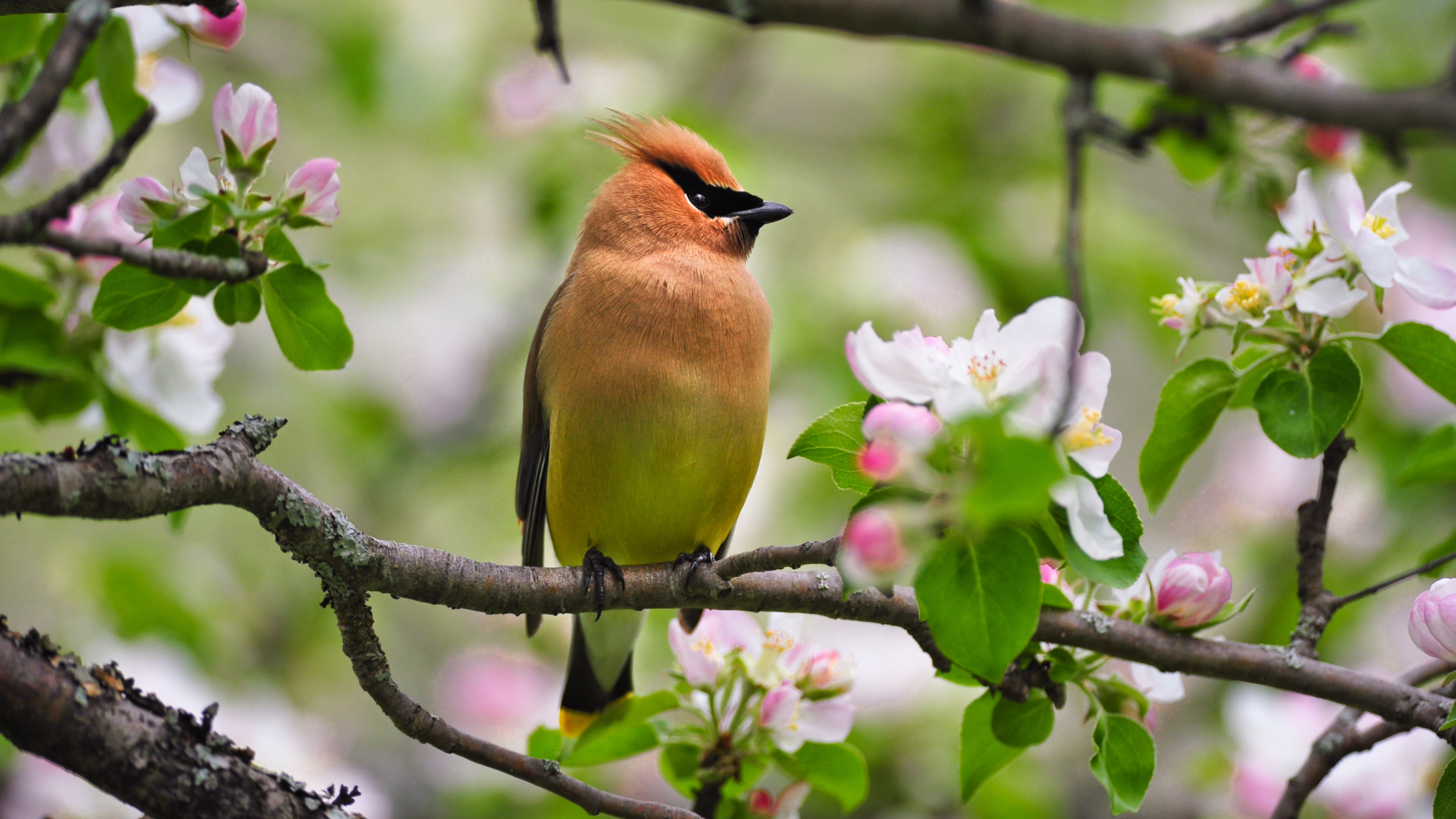
What is the best food to put out for birds?
When it comes to the best bird food, Dr. MacMillan says that there's no one food item that's best for birds. "Different food types may attract different species, so most people offer a mixture," she explains.
"Popular food items include sunflower seeds which are enjoyed by many birds, especially sparrows and bluetits. Nyger seeds (or nyjer/niger seeds) suit sparrows as well, but also doves and finches. Peanuts are popular with most birds and can be fed as granules or whole. Just note, if feeding peanuts whole these need to be offered in a bird feeder to stop smaller birds from taking a piece that is too large for them to safely swallow.
Suet is great all year round, but especially in the autumn and winter months when birds require more energy. Most birds will consume suet, but it is especially popular with woodpeckers, robins, and jays," Dr. MacMillan explains. You can check out our guide to how to make bird suet if you fancy whipping up some suet balls at home.
"Mealworms are a great source of protein as well as fat, and many birds enjoy eating them. They can be offered dried or alive, but is best to soak dried ones if offered during the breeding season so that young chicks can consume them more easily."
Read now: Should you help a baby bird?
Ideal for the winter, these suet balls will provide an abundance of protein and energy. They’ll fit well in a suet ball feeder and they don’t contain any artificial colors, flavors or preservatives, making them a great all-round, practical food

Rebecca is a vet surgeon who graduated from the Royal Veterinary College in 2009. She has a wealth of experience in first opinion small animal practice, having done a mixture of day-to-day routine work, on-call emergency duties and managerial roles over the years. She enjoys medicine in particular and she is proud to have recently achieved a BSAVA postgraduate certificate in small animal medicine (with commendation). She writes on various feline and canine topics, including behavior, nutrition, and health. Outside of work and writing she enjoys walking her own dog, spending time with her young family and baking!
Shona is a freelance writer and Projects and Editorial Exec at tech and digital hub TechSPARK. Shona is also a bit obsessed with her ageing staffy, Pip, who is just too cute to handle.
- Dr. Rebecca MacMillanVet
- Kathryn WilliamsFreelance writer
